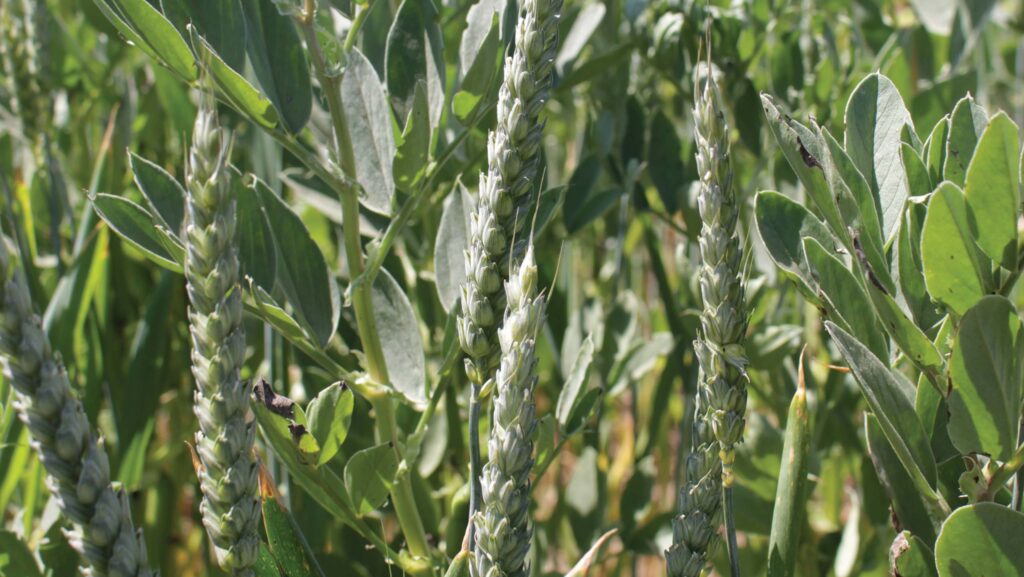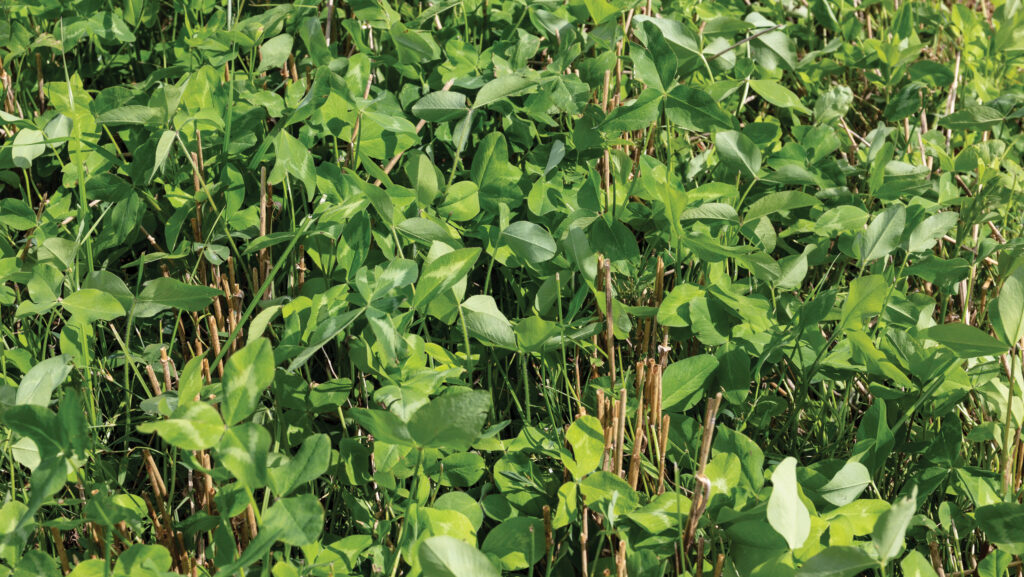Essential Tips for Successful Companion Planting with Winter Wheat

Companion cropping is gaining traction as a sustainable agricultural practice and is recognized under the Sustainable Farming Incentive (SFI), which offers a payment of £55 per hectare.
Typically, this practice involves sowing a companion crop alongside the primary cash crop in arable farming, with options to remove these companions in the spring or allow them to participate in the harvest.
There are additional forms of companion cropping, such as trap cropping and under-sowing or living mulches, all of which fall within the definition provided by Defra.
The SFI action, designated as CIPM3, can be adapted to either rotational or static approaches, meaning that the location of the companion crop may be changed in subsequent years or kept consistent throughout the three-year agreement.
For further reading, check out: Suffolk grower sees harvest success with BYDV-resistant wheat.
Defra outlines the aims of this action as fostering integrated pest management, creating habitats for birds and beneficial insects, enhancing nutrient efficiency, protecting soil health, and improving soil conditions overall.

© MAG/Richard Allison
Choosing Companion Species
For winter wheat farmers interested in implementing companion cropping this autumn, two particular species have proven effective, according to Ed Brown, head of agroecology at Hutchinsons. He suggests that winter beans and linseed are the top choices because they align well with the cash crop’s sowing requirements and herbicide usage.
It’s vital to differentiate between the approval status of herbicides and their safety for companion crops, especially if growers intend to harvest these companions.
Ed emphasizes that fulfilling the objectives of the SFI action is crucial, noting that companion crops must be sown and cultivated together with the main cash crop, generally until early spring.
Companion Cropping for Winter Wheat
- Use linseed or winter beans
- Verify herbicide compatibility
- Manage seed costs effectively
- Simplify the cropping process
- Avoid fields with heavy grassweed infestations
Managing Companion Removal
According to Ed, companions don’t necessarily need to be retained throughout the entire growing season. In practice, many growers remove them by early April when broad-leaved weed control measures are typically applied, which often removes the companions as well.
This strategy helps avoid any negative yield impacts on the main crop and incurs no additional costs. However, growers who don’t mind potential weed competition may choose to leave the companions in the field longer.
“Much of our understanding of companion cropping comes from field experience rather than independent research,” Ed notes, acknowledging that the practice involves a degree of experimentation.
Seed Rate Considerations
The appropriate seed rates for companion crops will vary based on the grower’s goals. For those looking for a straightforward approach, starting with 10 kg/ha of winter beans alongside the regular winter wheat seed rate is recommended.
“Seed rates can be increased; in past instances, we’ve utilized 40-50 kg/ha of beans,” Ed shares, noting that this incurs a seed cost of approximately £12/ha.
When drilling, growers have various options depending on their available machinery. They can mix the seeds in one hopper and drill them together, preferably at the deeper end of the cereal depth, or they could split the seeds between different hoppers for separate drilling.
“An alternative method is to drill beans first, followed by the wheat, though this is the least favorable option as it requires two passes during an already busy season,” Ed advises. He also adds that similar drilling techniques apply if choosing linseed as the companion crop, with emphasis on maintaining reasonable seed rates and utilizing home-saved seeds to minimize costs.
Agronomic Practices
Once the crops are established, the primary consideration shifts to herbicide selection. The presence of beans or linseed will limit the available herbicides since contact materials typically cannot be used.
“Most pre-emergence herbicides should be compatible, but it’s essential to remember the difference between crop safety and herbicide approval,” Ed explains. Other agronomic practices remain unchanged, with fungicides and trace nutrient applications made as needed.
For those planning to harvest both the companion and the cash crop, adjustments to seed rates are necessary, often increasing the companion seed rate while possibly reducing the winter wheat seed rate.
“Harvesting both winter wheat and winter beans is feasible, and decent yields can be achieved,” he notes.
The Case for Clover

© Blackthorn Arable
Clover is another valuable companion option, although it tends to be pricier, Ed notes. It excels as a companion crop but must be planted either in the summer before wheat sowing or broadcasted or inter-row drilled during the spring when the wheat is established to ensure proper establishment.
Good moisture retention and effective seed-to-soil contact are critical, and having excess organic matter on the soil surface can hinder establishment. Ed emphasizes that clover is most successful with prior tillage.
Growers must decide between annual and perennial clovers. If clover is already present from a past cover crop, winter wheat can be direct-seeded into it for an undersow crop. However, this approach can lead to increased green material at harvest.
Additionally, Hutchinsons is set to conduct trials on white clover this year to provide further clarity on herbicide options.
Vetches can also serve as companions but face substantial limitations in winter wheat due to herbicide compatibility issues. “Vetches perform well in winter oats, where pre-emergence herbicides are excluded, but they require removal by April,” Ed concludes.

Maria Sanchez completed her Bachelor’s degree in Plant Sciences from the University of California, Davis, in the USA. Her studies focused on plant genetics and biotechnology, with an emphasis on developing disease-resistant crop varieties. Maria has contributed to several research projects aimed at improving crop resilience to climate change and is now pursuing her Master’s degree in Plant Breeding.
